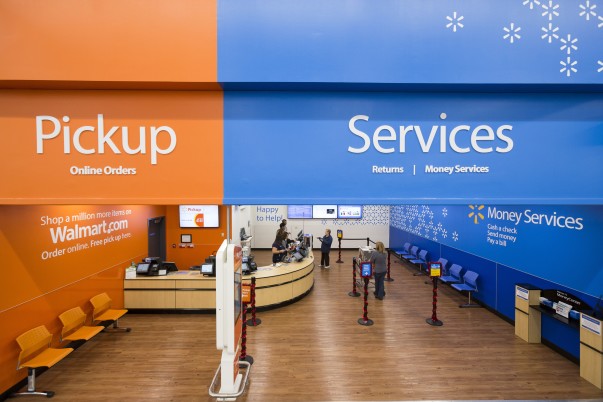REDWOOD LOGIN
Redwood PortalLTL
SCS
SCS Support
Rockfarm
Today’s competitive retail environment requires businesses that have been tremendously successful in the past to employ cutting-edge technology to appeal to the demands of modern consumers. The growth of online shopping has forever changed the landscape for those brick-and-mortar retailers that once thrived by simply attracting foot traffic to their establishments. Failure to demonstrate flexibility in their marketing and delivery strategies can spell doom for even the most successful business.
Walmart rose to prominence as one of the largest retailers in the United States by offering a wide selection of items at low prices. Their goal was to create a one-stop shopping experience where their customers could purchase just about anything that they needed. Many stores stayed open twenty-four hours a day. The strategy has served the company well, and according to statista.com, the company’s sales in 2017 topped 480 billion dollars.
Online shopping opened a new avenue where consumers had virtually unlimited choices available at any time of the day or night. Shoppers could now browse at their leisure from the comfort of their home, and companies like Amazon sprung up to take full advantage of the new marketplace. As online sales continued to grow, traditional retailers faced a new challenge that many of them were not ready to address. A look at your local shopping mall may now show an empty space where RadioShack or Sears once operated. Many retailers have failed to transition successfully to embrace e-commerce and have paid the price.
Successful retailers today need to adopt the omnichannel approach to attract and retain customers. Omnichannel retailing involves an integrated view of commerce that gives customers a unified experience incorporating both online and offline channels. For traditional retailers, creating real omnichannel shopping means adding to their brick-and-mortar presence with a strong online and digital offering.
 Walmart executives saw the writing on the wall with the introduction and subsequent tremendous growth of online shopping. Rather than sit on the sidelines and watch their company’s profits decline, they took a proactive approach to their entry into the online marketplace.
Walmart executives saw the writing on the wall with the introduction and subsequent tremendous growth of online shopping. Rather than sit on the sidelines and watch their company’s profits decline, they took a proactive approach to their entry into the online marketplace.
The company expanded its profit streams with the addition of the Walmart Marketplace. This platform competes with sites such as eBay by allowing third-party merchants to sell their products under the Walmart imprint. Walmart expands its brand recognition with this venture with very little exposure to risk.
Walmart has a large online store at walmart.com that ties into its brick-and-mortar locations. Consumers have a choice of ordering online and then picking up their merchandise at the local Walmart store or having it delivered to their homes. The company has also embraced the mobile shopping population with its mobile app that runs on just about any smartphone. Using the app streamlines the shoppers’ purchasing, payment, and reordering processes. Mobile users are known for making impulse purchases and Walmart is poised to capitalize on that front with their multiple delivery and pick-up options.
The Walmart corporation has lofty goals of competing successfully in the 21st Century marketplace. They have fully adopted the omnichannel strategy with their multiple online purchasing options combined with their legacy physical stores. The fact that they have these brick-and-mortar locations may give them an edge that retailers that solely operate online cannot match.
Using the Walmart app as its foundation, the company is moving to expand its omnichannel offerings to the problem of returns. Competitors with a strictly online presence, such as Amazon, have a single method of returning damaged or unwanted items. You need to ship it back to the seller and wait until your return shipment is verified before your purchase price is refunded.
Leveraging their physical stores and the Walmart app, the corporation is striving to cut the time of an in-store return to 30 seconds, according to cnbc.com. Beginning in November of 2017, Walmart began its Mobile Express Returns for items purchased at walmart.com and plans to incorporate in-store purchases into the program during 2018.
Consumers can now return items purchased at Walmart stores or online either through the mail or by visiting their local store. The company offers free returns through the mail by logging into your Walmart account and printing a prepaid shipping label. You can also use the Walmart app to streamline the return process and obtain your refund quickly.
Walmart describes the procedure to perform a Mobile Express Return as follows:
This allows you to immediately obtain your refund without waiting for your purchase to be returned and processed through the mail. Items that cannot be reused, such as shampoo and other health-related items can be refunded without an actual physical return. Shoppers return habits will be tracked on the app to ensure they are not abusing this feature.
By employing this omnichannel return strategy, Walmart can gain an edge over their online rivals. This is a unique way to leverage their years of physical retailing to set them apart from the competition. They have taken omnichannel to the next level by allowing consumers to both purchase and return products from Walmart through multiple channels.